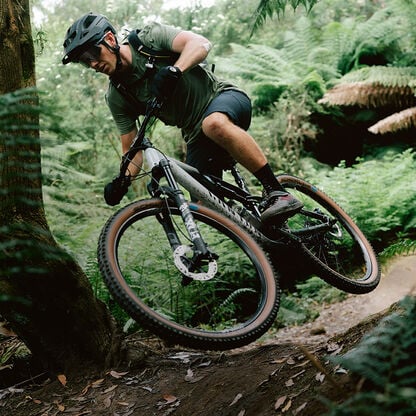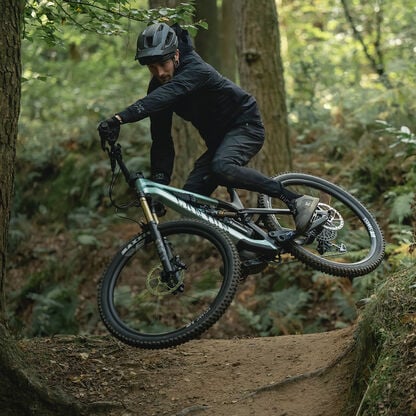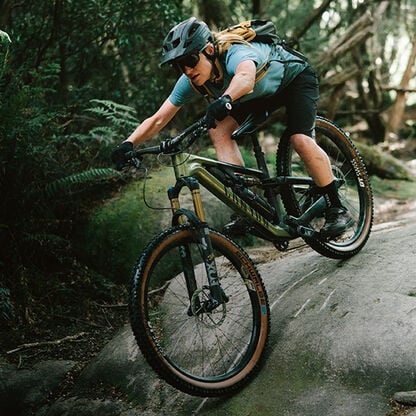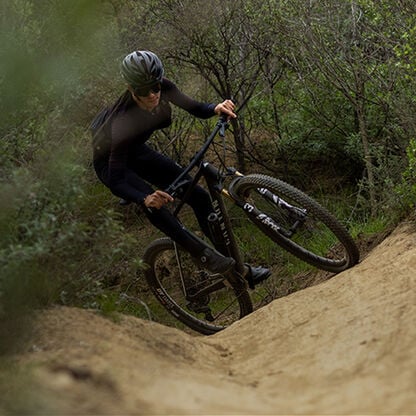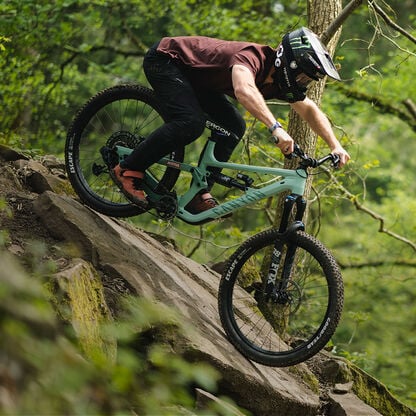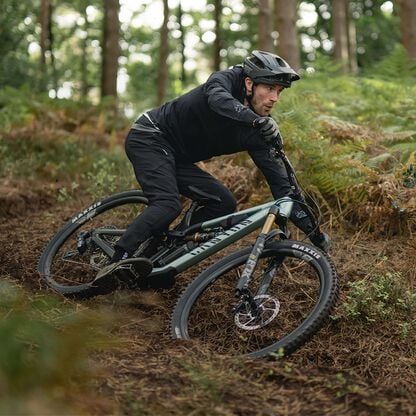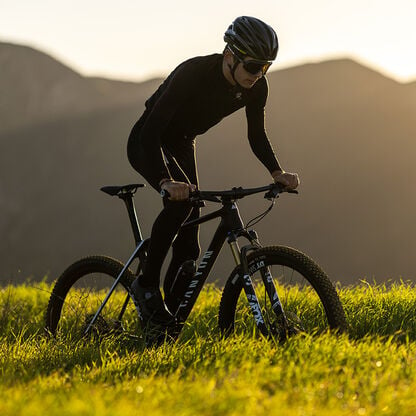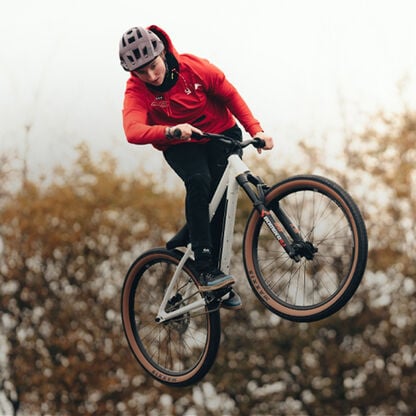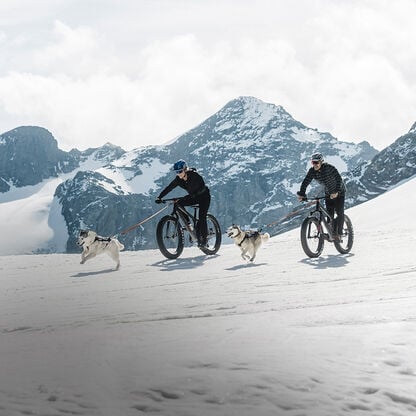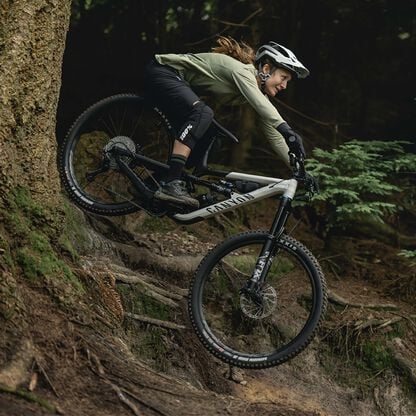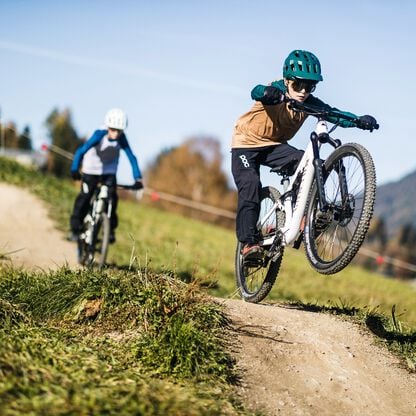Fat bike vs mountain bike: Making the right choice
If you’re looking to take on the trails and handle anything the environment can throw at you, should you be riding a mountain bike or a fat bike? We examine these two awesome bike types and explore why a couple of centimetres of tyre width makes all the difference.


With the amount of choices available to you, it can be hard to know what sort of bike you’re looking for. In this guide, we take a look at the fat bike vs mountain bike debate, including a look at what sort of riding each type of bike is best suited for. We hope this will help you make an informed decision on which bike is best for you.
Contents
What’s the purpose of fat bikes vs MTBs?
While there is definitely some overlap between fat bikes and mountain bikes, the crucial differences come down to purpose. When deciding which type of bike to go with, it is important to consider what your typical ride is going to look like and how the bike you choose will enrich your riding experience.
What are fat bikes for?
Fat bikes are made to fill a specific niche in the cycling world. With their ultra wide tyres and stable geometry, they are able to cruise over surfaces where even mountain bike tyres aren’t enough. Think snow, sand and deep mud.
For a taste of what fat bikes can do on the white stuff, explore our roundup of the best fat biking routes in Finland.
With their wide tyres, fat bikes have excellent rollover to get over any obstacles you may encounter, though the friction caused by the increased surface area tends to slow them down on the flats. Because fat bikes are designed to be stable – so that you can keep you balance on tricky surfaces – they are less responsive for high-speed technical riding.
What makes a mountain bike?
Unlike fat bikes which are very specific, the term ‘mountain bike’ connotes a very broad category, and one that’s tricky to distil into a few sentences. Different styles of mountain bikes are made to handle different terrains and disciplines. Without going into detail on every type of MTB, it’s fair to say that mountain bikes are designed to take on rougher and more technical surfaces than a road or gravel bike, without having that epic go-anywhere capability of a fat bike.
Most mountain bikes have at least front and sometimes rear suspension to help you take the hits and absorb the bumps from rocks and roots. Some sub-categories, like cross-country and enduro bikes, focus on speed and climbing, with tyres and geometry that are made for pedalling efficiency and control when you head uphill. Downhill bikes on the other hand, as the name suggests, are made for speed on descents, with less focus on climbing performance.

What are the key differences between fat bikes and mountain bikes?
Reflective of their different purposes, mountain bikes and fat bikes exhibit some physical contrasts. The most obvious difference is, of course, the size of the tyres and wheels. However, there are some more subtle differences that make a big difference to the way the bike feels and the experience that you have while riding it.
Wheels and tyres
The wheels and tyres on fat bikes are what sets them apart from other types of mountain bike. While mountain bike tyres range from 1.8” up to 2.6” wide, fat bike tyres start at around 3.7” and go all the way up to 5”. These tyres can be run at lower pressures than mountain bike tyres and this gives fat bikes the ability to roll over many different terrains and obstacles.
Fat bikes also tend to have a smaller wheel size than mountain bikes, generally coming with 26” and 27.5” wheels, while mountain bikes go from 26” up to 29”.
Fat bike vs mountain bike geometry
Mountain bike geometry varies greatly from discipline to discipline. Fat bike geometry is more focused on stability and confidence rather than speed or manoeuvrability. Our fat bike, the Dude CF, has longer chain stays and a steeper head angle when compared to our enduro and cross-country line-ups. This makes the Dude CF more stable, but does mean that you lose the manoeuvrability and pedalling efficiency of our nimbler mountain machines.
For a more in-depth look at mountain bike geos, check out our beginner’s guide to MTB geometry.
Suspension systems
It’s rare these days to find a mountain bike without front suspension at the very least, and as the technology has developed at pace, rear suspension is also much more commonplace. We sell a range of full-suspension as well as hardtail mountain bikes.
Where the fat bike world differs slightly is that you can still get rigid-framed options, including our Dude CF, which boasts a Rude carbon fibre fork promising nimble handling not often found on a fat bike.
What brakes do fat bikes and mountain bikes use?
Fat bikes and mountain bikes tend to have similar components, including their brake mechanisms. The vast majority of mountain bikes now are equipped with hydraulic disc brakes for good modulation and stopping power on descents and the Dude CF fat bike is no exception. Virtually all fat bikes are equipped with disc brakes for better stopping power in all weather and on all surfaces.
Gearing systems
There is a fair amount of overlap when it comes to mountain bike and fat bike gearing systems. The main difference is that while some mountain bikes are still equipped with 2x or 3x drivetrains, the majority of contemporary fat bikes use a 1x gearing system. Without a front derailleur, you don’t have to worry about it failing mid-ride or getting clogged up with peanut butter mud.

Fat bike vs mountain bike: how to make the right choice?
In the end, whether you are better suited to a fat bike or a mountain bike comes down to the type of riding you’re planning on doing.
Are you looking for a bike that will perform on the climbs and the descents, while having the responsive steering needed to navigate rocks and roots on your way down? A mountain bike will give you the performance you’re looking for. Or would you prefer a more leisurely ride on adventurous surfaces like deep snow and sandy beaches? In that case, the wide tyres of a fat bike will get the job done right.
When choosing between a mountain bike and a fat bike, it is also important to consider what is most important to you when you’re in the saddle. Take a moment to think about what you like or don’t like about your current ride and what you would improve. Is your focus on speed and better control over technical sections? A mountain bike is going to be your ideal companion on those trails. Do you prefer a slower, more stable ride? Then a fat bike is the way to go.

Are fat tyre bikes harder to ride?
Not at all. Fat bikes excel on trickier surfaces, such as beaches or very muddy areas and will be far easier to ride than a mountain bike in those instances. A mountain bike will struggle in deep snow or sand because of its narrower tyres.
On the other hand, if you’re planning to take on technical singletrack, a fat bike will certainly be harder to manage and more unwieldy over very technical sections. Fat bikes also tend to be heavier than your typical mountain bike and while that can be an asset on descents, the weight can hold you back on climbs – so in that context, you probably ought to avoid the fat bike.
If you feel like you need a little assistance while riding your fat bike, you could always try boosting it with some husky power.
Can you use a fat bike for trail riding?
You can, but it may not give you the same benefits that you will get out of a full-stack MTB like our Spectral trail mountain bike. The wide tyres on a fat bike will provide you with some comfort and the ability to roll over many obstacles. However, many models don’t have suspension, meaning that you may feel beaten up after a long ride on rockier trails.
Trail bikes have more responsive handling and are easier to manoeuvre on the winding, flowy runs you’ll find at an MTB centre (as that is the terrain that they are designed for). They also tend to have at least front suspension and many models have rear suspension as well for more comfort and the ability to take on jumps and other more advanced and technical trail features.
Have more questions about knobbly-tyred bicycles? Check out our mountain bike buyer’s guide.
Discover our Mountain Bikes
Did this article help?
Thank you for your feedback
